This Friday, WWF's annual Wear It Wild campaign kicks off to raise awareness and funds to help protect endangered animals around the world. To support this important cause and to celebrate how incredible our wildlife is, here is the story of one of my favourite wildlife experiences...
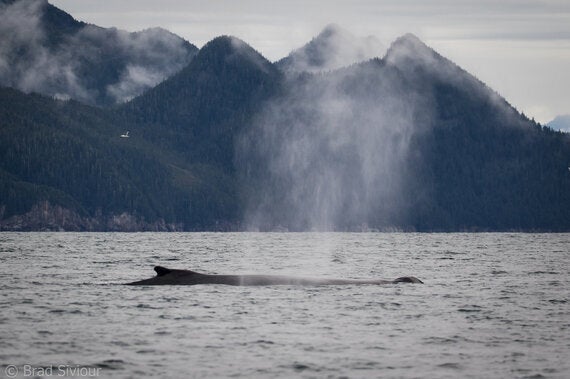
Of all the memories I will take with me from my travels, being surrounded by Humpback whales - one of the world's largest mammals - is the one I hope will never fade.
'Please let this stay with me forever,' I think, as another systematic blow of tiny water droplets spray out of the blow hole of a whale and into the air. The deep, heavy puff that accompanies it sends tingles through me. It feels like we're in the middle of a wild dream, or even better, a Sir David Attenborough documentary.
My partner Brad and I are with a small group of guests on a small rubber power boat called a Zodiac, at the Chiswell Islands in the Gulf of Alaska. A Humpback whale has been feeding around us, at the surface of the water, for 45 minutes.
It's a magnificent sight. This particular Humpback must be at least 12 metres long, and just the visible portion of its back is longer than our boat. They can grow to around 15 metres and the only real give-away of its true size is the large shadow under the water.
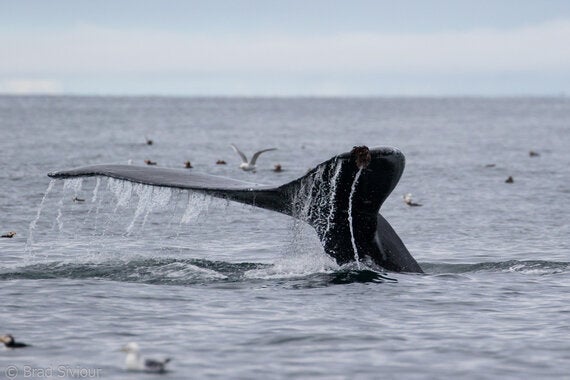
Another blow, and this time we see a slick hump and fluke gracefully lift out of the water. Higher and higher it rises, causing a cascade of sea water as it lifts. Black with speckles of white dot its underside - as if someone had flicked a paintbrush coated in paint at this particular whale tail. We are close enough to see the unique little nips that, like a fingerprint, makes this whale identifiable from all the others.
Then it sinks again, gentle and slow in its movement, before disappearing beneath the surface.
In that moment, it felt like the world was running in slow motion and I became a live spectator in one of Planet Earth's greatest shows. It's a warm, slightly overcast day out here in southern Alaska, with a few rays of sunshine shining through. Around us, rugged volcanic islands and their surrounding cliff faces act as the home to thousands of sea birds such as Tufted and Horned Puffins, Kittiwakes, Pelagic Cormorants and Glaucous-winged Gulls - their distant squarks echoing through the air. Some low-lying cloud nestles around the rock faces, creating a mysterious edge to our surrounding wilderness. I close my eyes and replay the magic.
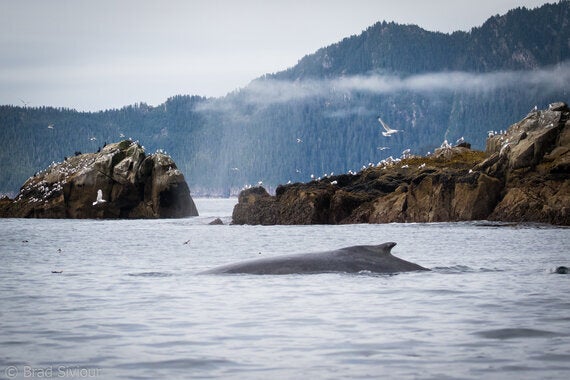
Then, the sound of another deep puff. My heart jumps and my eyes fly open - I turn around to see another blow and another whale - this time, right next to us - just a few metres away.
Our boat engine is off, and everything is still, all but the gentle puff every few minutes.
This Humpback's skin is smooth and a glistening grey, as the summer sun bounces off his back. He is just three metres away now and happily surfacing near us - unafraid and free in this wild Alaskan setting.
Then, out comes a fin - and we are in the right position to watch as it slaps hard down on the water, creating a splash and sending feeding Kittiwakes scarpering in its wake.
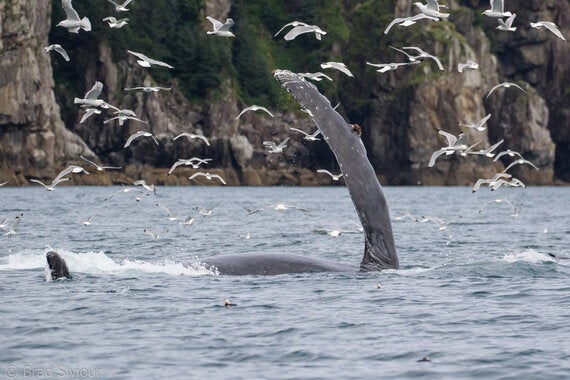
Brad, a Marine Biologist and Expedition Leader on a ship, the Silver Discoverer, explains how just under the surface thousands of tiny bait fish were scrambling in a ball, driven there from the deeper water by larger predatory fish. Once the bait fish are at the surface, sea birds begin to plunge into or dive under the water to feed and it's this array of action that draws in the whale - who can take full advantage of having thousands of small fish in one place for lunch.
As if our Humpback knew what we were discussing, out of the water came a huge set of expanding jaws - a rare sight when whale-watching - and we looked on in awe as it took in a massive gulp of water and fish - and a nearby Tufted puffin that just happened to be also taking advantage of the bait-ball buffet.
That's right! Our Humpback whale just almost swallowed a Puffin. Luckily, the gulp was large and slow - and the Tufted Puffin had time to flit its tiny wings and take off - straight out of the closing jaws of a Humpback whale. Wow. Wow. Wow.
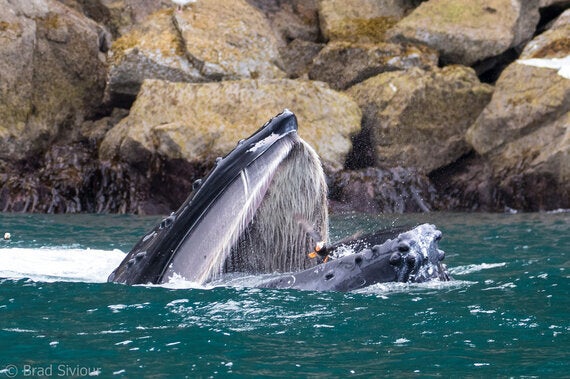
Having enjoyed a feast next to us, the Humpback decided to move on to the next bait ball and once again arched his back, raised his fluke and took another shallow dive.
Remarkably, these whales can spend around 30 minutes or more underwater. In this instance, they were under for just a few minutes - but generally Humpbacks tend to stick around on the surface when they rest. Clearly this time, there was just too much food not to indulge.
As he went under, we decided it was time for us to leave. The whales had already given us so many more memories than we could have ever imagined.
With that, we headed away from the most wondrous creatures, our eyes still wide with shock and our smiles even wider. What an incredible world we live in.
Since 1970, populations of wild species have fallen by half. Without the tireless efforts of conservation organisations like WWF, iconic species like tigers, elephants and rhinos could become extinct in our lifetimes. This week, we can all help do our bit to help protect wildlife around the world by raising awareness with WWF's fun Wear It Wild campaign. Get involved.
Photography credit: Brad Siviour